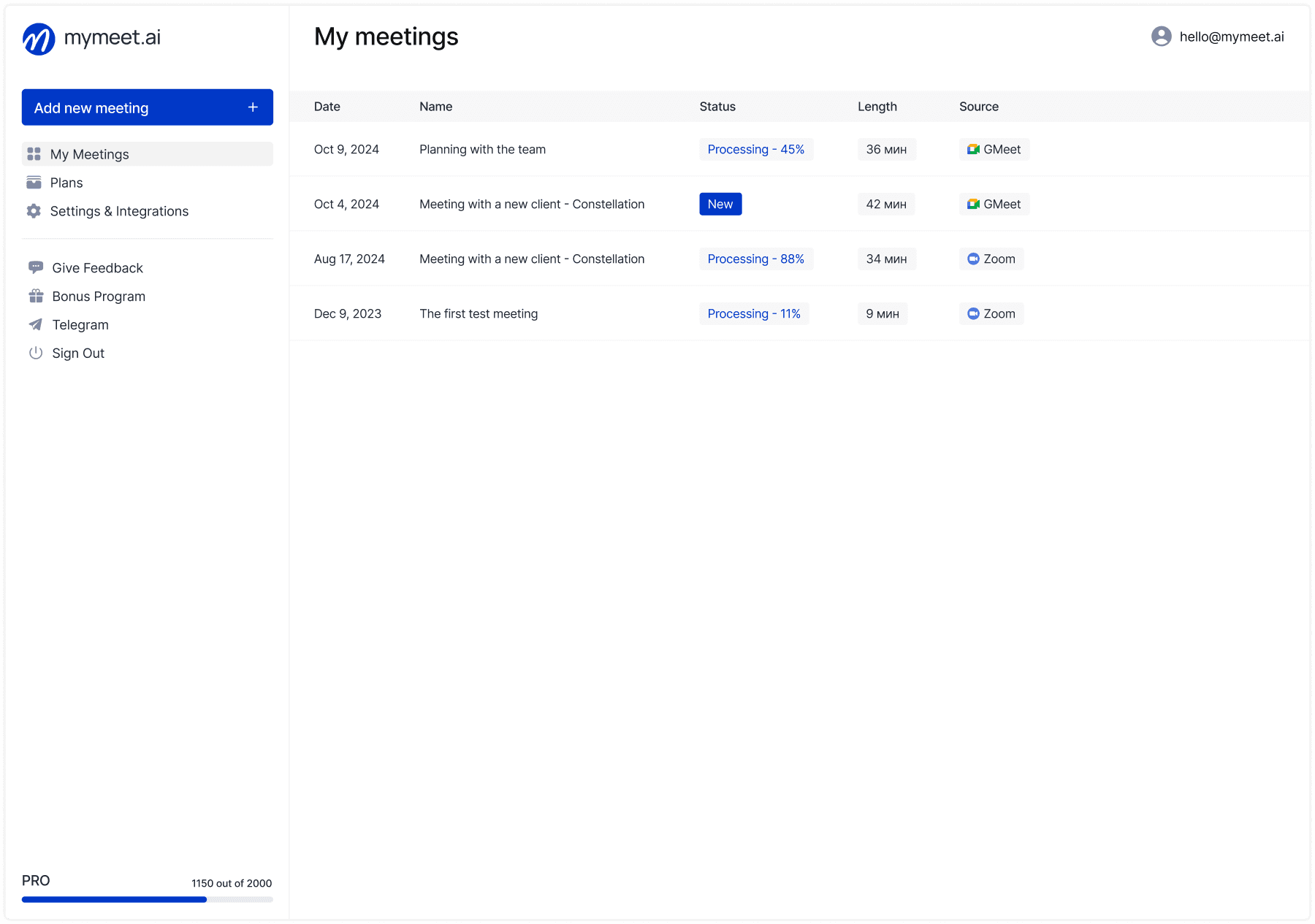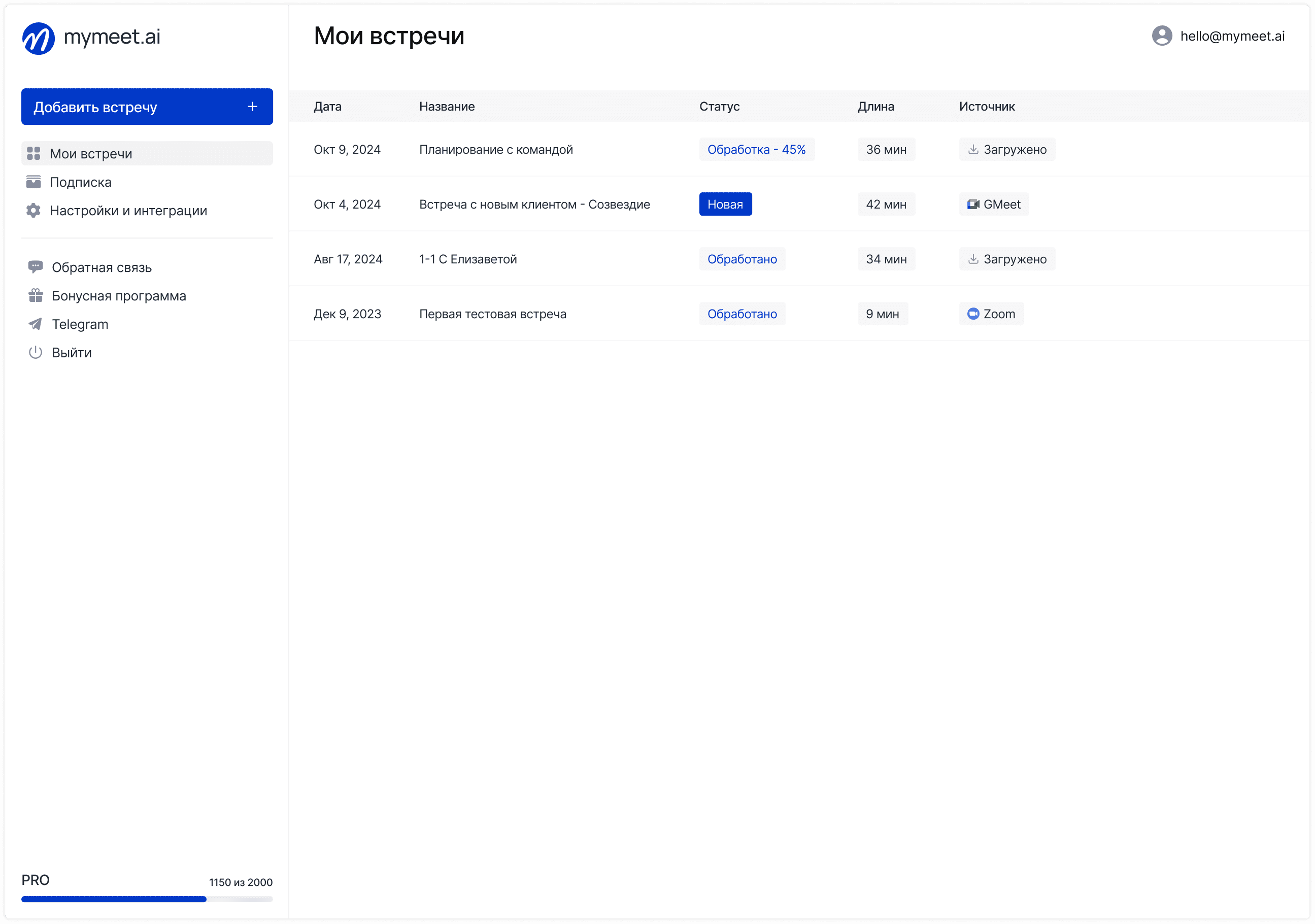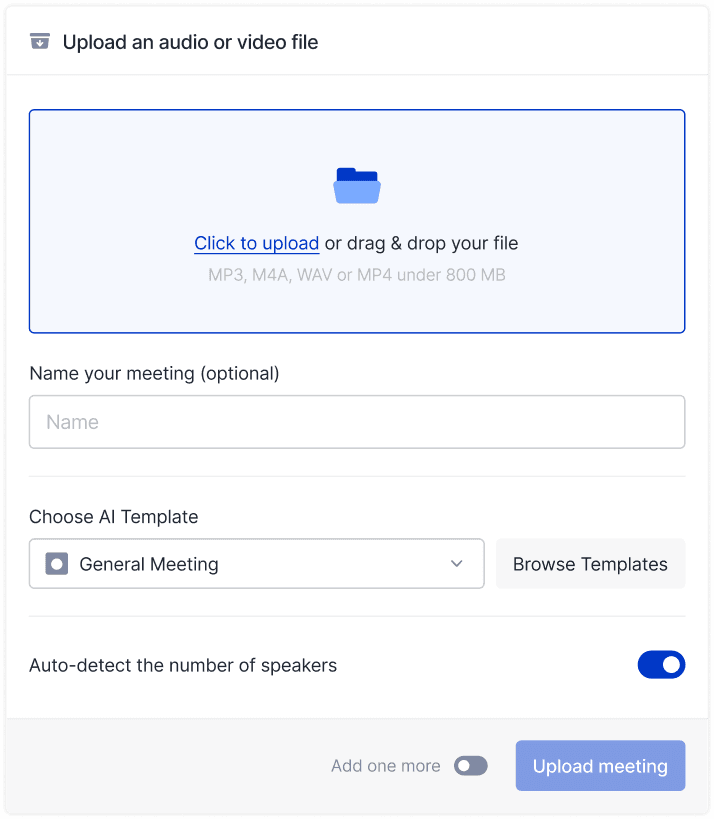Meeting Tips

Radzivon Alkhovik
May 26, 2025
Sitting in a meeting room with Japanese partners, an American businessman nervously taps his pen on the table. An hour has already been spent on mutual greetings and tea ceremony, while the business hasn't moved forward at all. Meanwhile, his Japanese colleagues feel the American is unjustifiably rushing, trying to skip the crucial stage of building trust. Both sides are professional and aim for success, but cultural differences might derail the deal before real negotiations even begin.
The world of global business is a mosaic of different approaches to decision-making, relationship building, and the very format of business meetings. In this article, we'll examine key cultural features that influence international negotiations and provide practical recommendations for successful interaction.
Fundamental Differences in Approaches to Business Meetings
To effectively interact with foreign partners, it's necessary to understand basic cultural differences. These features form the foundation upon which all further communication is built.
Monochronic and Polychronic Cultures

In a German company office, clocks take on an almost sacred significance. A meeting scheduled for 2:00 PM starts at exactly 2:00 PM—not a minute later. The situation is quite different in Brazil, where a 30-minute delay is considered normal, and the day's schedule can completely change due to an unexpected meeting.
Main characteristics of monochronic cultures (USA, Germany, Scandinavia):
Strict punctuality and schedule adherence
Clear agenda and sequential problem-solving
Focus on time efficiency
Planning and following the schedule
Preference for completing one task before starting another
Characteristics of polychronic cultures (Latin America, Middle East):
Flexible approach to schedules and deadlines
Simultaneous handling of multiple tasks
Priority of relationships over timeframes
Readiness to change plans when new circumstances arise
Natural interruption of meetings for communication or other matters
Understanding this difference helps avoid misinterpretations: a German's insistence on adhering to timeframes isn't coldness but professionalism in their understanding. And a Brazilian's willingness to postpone contract discussions for an informal lunch isn't irresponsibility but an investment in relationships.
High-Context and Low-Context Cultures

An American investor directly asks his Chinese partner about possible project risks and wonders why, instead of a clear answer, he receives evasive formulations and stories from the company's past experience. Meanwhile, the Chinese businessman finds the American's directness almost offensive.
Features of high-context cultures (Japan, China, Arab countries):
Most information is conveyed through context, not explicit words
Value is placed on the ability to "read between the lines" and understand hints
Direct criticism or refusal is considered unacceptable
Nonverbal communication is critically important
Importance of maintaining harmony and participants' "face"
Characteristics of low-context cultures (USA, Germany, Scandinavia):
Clarity and directness of expression are valued
Information is primarily conveyed through words
Direct questions and clear answers are considered signs of professionalism
Preference for specific facts and explicit agreements
Open discussion of problems and disagreements
These fundamental differences determine the entire course of negotiations—from the first greeting to closing the deal. Ignoring these features can lead to serious misunderstandings, even if the technical part of the negotiations is conducted impeccably.
Regional Peculiarities of Business Meeting Culture
No two identical business cultures exist on the planet. Even neighboring countries can radically differ in their approaches to negotiations. Let's examine the key features of the world's main regions.
East Asia: Harmony and Hierarchy

East Asian business cultures, despite differences among themselves, are united by common Confucian values: respect for hierarchy, striving for harmony, and the importance of "saving face."
Japan: Ceremoniality and Harmony

A Japanese business meeting resembles a well-directed ceremony where every detail matters. The exchange of business cards (meishi) becomes a special ritual: the card is presented with both hands, received with a bow, and carefully studied before being neatly put away.
Key aspects of Japanese business culture:
Strict hierarchy and observance of status differences
Importance of group harmony and consensus
Collective decision-making through the "ringi" process
Avoidance of direct refusal and open contradictions
Silence as a natural part of communication
Long-term orientation and gradual trust-building
In Japanese business, patience is truly a virtue. First meetings are often devoted to getting acquainted rather than discussing deals. Willingness to invest time in building relationships is highly valued and pays off in long-term cooperation.
China: Guanxi and Long-Term Relationships

In China, business culture revolves around the concept of "guanxi"—a network of relationships and mutual obligations. Before discussing contracts, Chinese businesspeople seek to establish a personal connection with partners.
Features of Chinese business culture:
Priority of personal relationships over formal agreements
High value of "face" and participants' status
Indirect communication and avoidance of open disagreement
Hierarchical decision-making structure
Importance of shared meals and informal communication
Orientation toward long-term cooperation perspective
Chinese partners evaluate not only the commercial offer but also the prospect of long-term relationships. Investment in personal connections pays off in reliability of future cooperation.
South Korea: Speed and Hierarchy

Korean business culture represents an interesting hybrid. Like other East Asian countries, Korea deeply respects Confucian values of hierarchy and harmony. However, Korean business is distinguished by its dynamism and tendency toward quick decisions.
Characteristic features of Korean business style:
Pronounced hierarchy and respect for elders in age and status
Quick decision-making pace, especially compared to Japan
Emotional and expressive communication
Critical importance of informal communication after meetings
Strong group loyalty and teamwork
Balance between traditionalism and innovation
Unlike the more reserved Japanese, Koreans are more emotional in expressing both approval and disagreement. This makes communication more direct, but still requires attention to hierarchical nuances.
Middle East: Relationships and Trust
In the Middle East, business is inseparable from personal relationships. Business meetings here often begin and end as friendly conversations in which the technical details of the deal comprise only a small part.
Arab Countries: Personalized Business

In the Arab world, business relationships are built on personal trust. Meetings begin with lengthy greetings, inquiries about family and health. This ritual isn't just a formality but an important process of establishing connection.
Key aspects of Arab business culture:
Priority of personal relationships and trust
Flexible approach to time and schedule
Importance of hospitality and generosity
Significant influence of religious practices on business rhythm
Centralized decision-making by key figures
Preference for informal settings for negotiations
It's important to remember religious aspects: meetings aren't scheduled during prayer times, business activity slows during the holy month of Ramadan, and it's best to avoid business meetings on Friday (the holy day for Muslims).
Turkey: Bridge Between East and West

Turkish business culture represents a unique synthesis of Eastern traditions and Western business practices. Both personal relationships and a professional approach to business are valued here.
Features of Turkish business style:
High value on hospitality and mutual respect
Emotional and active negotiation manner
Hybrid approach: personal relationships + business efficiency
Moderate hierarchy with elements of collective decision-making
Tendency to bargain and discuss conditions
Understanding of both Eastern and Western business practices
Turkish businesspeople, especially in large cities and international companies, are usually well-acquainted with Western business practices. This makes Turkey a convenient "training ground" for companies just beginning work in the Middle East.
Europe: Diversity in Unity
The European continent is a true mosaic of business cultures. Moving from Stockholm to Milan, you seem to enter a different world of negotiations, although the physical distance between cities is relatively small.
Northern Europe: Efficiency and Equality

In Scandinavian countries, a business meeting is a model of efficiency. Minimal formalities, absence of rigid hierarchical structures, and focus on results. Managers and subordinates often address each other informally and by first name, regardless of age and status.
Characteristics of Northern European business style:
Minimal hierarchy and egalitarian approach
High value on punctuality and efficiency
Directness and honesty in communication
Consensus approach to decision-making
Clear separation of work and personal life
Restraint in emotional expressions
In Scandinavian business, work and personal life are clearly separated. After the workday ends, colleagues rarely continue communication, and weekends are considered inviolable personal time.
Central Europe: Structure and Precision

Business meetings in Germany, Austria, and Switzerland are characterized by unparalleled structure and attention to detail. The agenda is prepared in advance, materials are carefully prepared, each item is methodically discussed.
Key aspects of Central European business culture:
Unconditional punctuality and planning
Preference for detailed facts and analytical approach
Structured and methodical discussion process
Professional formality and separation of personal and business
Importance of written agreements with precise wording
Thorough elaboration of details and technical specifications
In Central European business, written agreements have special significance. Verbal agreements are considered preliminary until documented on paper with all conditions and obligations of the parties.
Southern Europe: Relationships and Flexibility

In Italy, Spain, and Greece, business meetings take place in a more relaxed atmosphere. Strict time observance is considered less important than the quality of interaction. A 15-20 minute delay usually doesn't cause a negative reaction.
Features of Southern European business style:
Flexible approach to scheduling and planning
Significant role of personal relationships and trust
Emotional and expressive communication
Multitasking and parallel discussion of several topics
Priority of relationship quality over strict adherence to procedures
Importance of shared meals for strengthening business ties
Multitasking during meetings is typical for Southern Europe. Participants may simultaneously discuss several topics, answer phone calls, or greet entering colleagues without considering it a breach of etiquette.
North and Latin America: Contrasts of the New World
The American continent demonstrates a striking contrast in business cultures: from the extremely pragmatic approach of the USA to the deeply personal style of Latin America.
USA: Efficiency and Results

An American business meeting embodies efficiency. Time is highly valued, so meetings start punctually, follow a clear agenda, and focus on specific results. Introductory pleasantries are minimal—after a brief greeting, they get right to business.
Key features of American business culture:
High value of time and efficiency
Straightforwardness and task orientation
Quick decision-making with a focus on results
Individualism and competitive approach
Preference for specifics and clear agreements
Orientation toward short-term benefits and quick results
American business is individualistic and competitive. Personal achievements and initiative are highly valued, and relationships between companies are often built on a contractual basis rather than personal connections.
Latin America: Relationships and Flexibility

In Latin America, a business meeting is first and foremost a social interaction. Building personal relationships precedes discussion of business matters. First meetings are often completely devoted to getting acquainted, without discussing specific proposals.
Characteristics of Latin American business style:
Priority of personal relationships over formal agreements
Flexible attitude toward time and planning
Emotional and highly contextual communication
Importance of social status and family ties
Significance of informal communication and shared meals
Hierarchical structures with centralized decision-making
Decisions are often made not only based on figures and facts but also on personal trust and intuition. Top management plays a key role in decision-making, even if not present at all negotiation stages.
Practical Recommendations for International Negotiations
Understanding cultural differences is just the first step. The success of international negotiations depends on the ability to adapt your approach to the particularities of partners from different countries.
Preparation for International Meetings
Thorough preparation significantly increases the chances of successful negotiations with foreign partners. Take time to study not only the business of your potential partners but also the cultural context in which they operate.
Checklist for preparing for international negotiations:
Study the specifics of the country's business culture (attitudes toward time, hierarchy, decision-making)
Familiarize yourself with greeting rules, business card use, dress code
Learn a few phrases in your partner's language or find a qualified interpreter
Adapt presentation materials to the cultural characteristics of the audience
Gather information about the specific people you'll be meeting
Learn about taboos and sensitive topics to avoid
Prepare appropriate business gifts if customary in that culture
Investments in preparation pay off in increased trust and respect from foreign partners. Knowledge of cultural peculiarities helps avoid awkward situations and creates a foundation for productive cooperation.
Adaptation of Communication Style
Successful international negotiators can flexibly change their communication style depending on the cultural context.
Recommendations for communication adaptation:
With partners from high-context cultures, use a more indirect approach, metaphors, and stories
In low-context cultures, be straightforward, concrete, and clearly formulate proposals
Adapt speech pace and formality level to local norms
Consider the acceptable level of emotionality in different cultures
Pay attention to status and hierarchy where important
Tune into the appropriate time horizon (short-term/long-term)
When necessary, slow down the negotiation pace and allocate more time for relationship building
Flexibility in communication demonstrates respect for the partner's culture and creates a foundation for successful cooperation. However, it's important to remain authentic—excessive adaptation may be perceived as insincerity.
Using Digital Tools to Overcome Cultural Barriers
Modern technologies offer powerful means for improving cross-cultural communication. They help overcome language barriers and reduce the risk of misunderstanding.
Technological solutions for international negotiations:
Video conferencing platforms allow establishing visual contact before a personal meeting
Simultaneous translation systems reduce the language barrier and allow speaking in one's native language
Tools for recording and analyzing meetings help capture discussion nuances
Collaborative document platforms consider cultural preferences in information presentation
Cloud storage provides access to agreed materials for international teams
Cultural adaptation applications provide contextual hints about local customs
mymeet.ai: Overcoming Language and Cultural Barriers in Business Communications

mymeet.ai offers a comprehensive solution for international teams and cross-cultural negotiations, focusing on accurate transmission of communication meaning in different languages. The platform helps overcome key challenges in international business communication:

Multilingual transcription—the platform supports 73 languages, including major international business languages and regional languages
Cross-cultural interpretation—the system considers cultural context when creating summaries and highlighting key points
Translation and terminology mapping—ensures correct translation of specific industry terms

Differentiation between formal and informal communication—helps capture communication subtleties in different cultural contexts

Highlighting culturally specific discussion aspects—identifies moments requiring additional attention due to cultural differences
Particularly valuable for international teams is the instant translation feature for transcriptions into any supported language, allowing participants to view meeting results in their native language. This significantly reduces the risk of misunderstanding and accelerates decision consensus.
mymeet.ai integrates with popular international video conferencing platforms (Zoom, Teams, Google Meet) and the Russian solution "Telemost," making it a universal tool for companies with geographically distributed offices.
When choosing digital tools, it's important to consider partners' cultural characteristics and technological preferences. In some cultures, personal presence is valued above technological solutions; in others, efficiency and time savings outweigh the advantages of face-to-face meetings.
Comparison of Key Aspects of Business Meeting Culture in Different Regions
For a visual representation of differences in approaches to business meetings in different parts of the world, we offer a comparative table of key aspects. It will help quickly orient yourself when preparing for international negotiations.
Region | Attitude to Time | Communication Style | Decision-Making Process | Role of Relationships | Formality |
North America | Monochronic, high value on punctuality | Direct, low-context | Fast, often individual | Secondary to business aspects | Medium |
Latin America | Polychronic, flexible | Indirect, emotional | Hierarchical, often slow | Paramount importance | Medium-high |
Northern Europe | Strictly monochronic | Direct, low-context | Consensus-based, moderate pace | Secondary | Low-medium |
Southern Europe | Polychronic | Expressive, medium-context | Hierarchical with consultations | Very important | Medium |
East Asia | Monochronic with nuances | Indirect, high-context | Collective, often slow | Fundamental | High |
Middle East | Polychronic | High-context, expressive | Centralized | Mandatory foundation | High in formal settings |
This table presents generalized characteristics. In practice, it's important to consider that within each region, there are significant differences between countries, industries, and even individual companies. It serves as a starting point for deeper study of the specific culture with which you'll be interacting.
Technologies for Effective International Negotiations
Modern digital tools are becoming indispensable aids in overcoming cultural and language barriers. They make international negotiations more productive and reduce the risk of misunderstanding.
Meeting analysis platforms with artificial intelligence elements, such as mymeet.ai, offer features that are particularly valuable in cross-cultural communication. They allow not only recording and transcribing meetings but also identifying key moments, analyzing tone, and even tracking nonverbal aspects of communication.
The main advantages of using such technologies:
Accurate recording of all agreements, including implicitly expressed preferences
Structuring information for non-linear discussions in polychronic cultures
Reducing the risk of semantic misunderstandings in multilingual teams
Identifying potential problem points through analysis of participant reactions
Creating an objective meeting record accessible to all participants
Automatic highlighting of tasks and responsible parties with consideration of cultural nuances
In multilingual teams, translation functions and analysis of key terms reduce the risk of semantic misunderstandings. This is critically important when discussing legal and financial aspects of deals, where the precision of wording is decisive.
Conclusion
International negotiations are an art requiring not only professional knowledge but also a deep understanding of cultural differences. In today's global world, the ability to adapt to different business cultures becomes a crucial competitive advantage.
Successful international negotiators don't just study basic etiquette rules of different countries—they develop true cultural flexibility. They understand that behind the external manifestations of business culture lie deep values and worldview. What is perceived as efficiency in one culture may be regarded as rudeness in another. And what seems like excessive slowness is often a necessary process of building trust.
Key principles for success in international business meetings:
Invest time in studying cultural peculiarities before beginning negotiations
Adapt your communication style to the context and expectations of partners
Show respect for local traditions and business protocols
Develop patience and flexibility regarding the pace and process of decision-making
Use modern technologies to overcome language barriers
Remember that behind any cultural differences are people with similar basic needs
In the era of globalization, cultural competence becomes not just desirable but a necessary skill for business leaders. Those able to effectively interact with representatives of different cultures possess a unique advantage in the international market. They create bridges of understanding that lead to mutually beneficial cooperation extending far beyond individual deals.
Frequently Asked Questions
How should I prepare for the first meeting with partners from another culture?
Study the cultural features of the country, the specific company, and the people you'll meet. Prepare business cards according to local traditions and adapt presentation materials. If possible, consult with someone experienced in that culture. Clarify the meeting format in advance and arrive early, especially in punctual cultures.
How can I avoid unintentional offenses during international negotiations?
Study the main taboos and sensitive topics of your partner's culture. Refrain from jokes and monitor nonverbal signals from your interlocutors. When in doubt, exercise restraint. If you notice a negative reaction, politely clarify the situation or apologize.
What cultural aspects are most important for video conferences?
For virtual meetings, pay attention to the exact start time considering time zones, clear agenda, speech pace, and simple language without idioms. For high-context cultures, use more visual elements and preliminary informal communication. Consider technical capabilities and cultural preferences regarding participant visibility and meeting recording.
How can I adapt the decision-making style when working with different cultures?
In hierarchical cultures (Japan, China, Arab countries), respect the top-down decision-making process and don't expect immediate answers. In consensus cultures (Scandinavia), provide time for collective discussion. In the USA, prepare for quick decisions and concrete proposals. Adapt your approach by providing either detailed information for analysis or emotional arguments about mutual benefit.
What should I do if a cultural conflict arises during negotiations?
If tension arises, take a pause to assess the situation. Don't react immediately, especially if you feel emotional tension. Acknowledge the existence of cultural differences and express a desire to understand your partner's viewpoint. Focus on common goals and mutual benefit. For serious conflicts, suggest a break or continuation of discussion later. In some cases, it's useful to involve a cultural mediator.
How should I properly use an interpreter in international negotiations?
Choose an interpreter familiar not only with the language but also with the business culture of both sides. Brief them before the meeting about goals and key terms. Speak in short, clear phrases and pause for translation. Address your interlocutor directly, not the interpreter. Consider that translation takes time, and plan the meeting accordingly. After important discussions, verify with the interpreter the correct understanding of agreements.
What significance do business gifts have in different cultures?
Gifts play different roles: in Japan, China, and the Middle East, they're important as a sign of respect; in Northern Europe, they may be perceived as an attempt to exert influence. Choose gifts considering local traditions: in China, avoid clocks and sharp objects; in the Middle East, avoid alcohol and images of people or animals. Consider the recipient's corporate ethics rules—many Western companies have restrictions on accepting gifts.
What is the significance of nonverbal communication in different business cultures?
In high-context cultures (Asia, Middle East), nonverbal signals are critically important and often contain the main message meaning. In low-context cultures (USA, Germany), they complement verbal information. Gestures have different meanings: "thumbs up" is positive in the West but offensive in some Middle Eastern countries. Eye contact, communication distance, touches—all these aspects differ significantly across cultures.
How can I effectively manage time in international negotiations?
Consider cultural differences in attitudes toward time. For meetings with partners from monochronic cultures (Germany, Switzerland), create a detailed schedule and strictly adhere to it. With representatives of polychronic cultures (Latin America, Middle East), provide a flexible schedule and additional time. In any case, arrive on time—it's better to show respect for punctuality, even if the other side may be late.
How should I adapt presentation materials for an international audience?
Adapt style and content according to cultural preferences: for German partners, prepare detailed technical data; for Americans, focus on return on investment; for Asian colleagues, emphasize long-term advantages and relationship harmony. Use simple language without complex idioms and local slang. Adapt visual elements considering cultural symbols and color associations. If possible, translate key slides into the audience's language.
Radzivon Alkhovik
May 26, 2025








